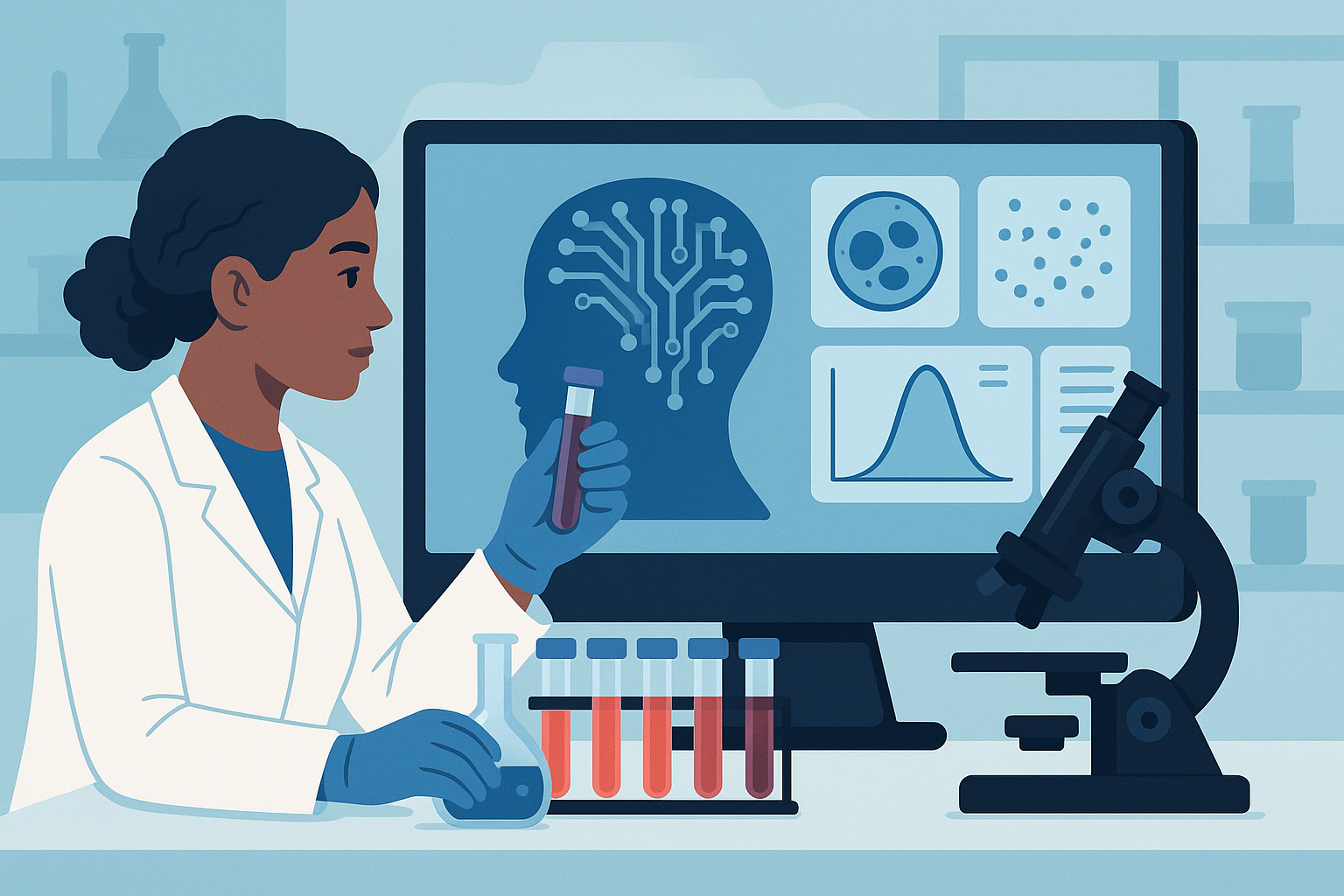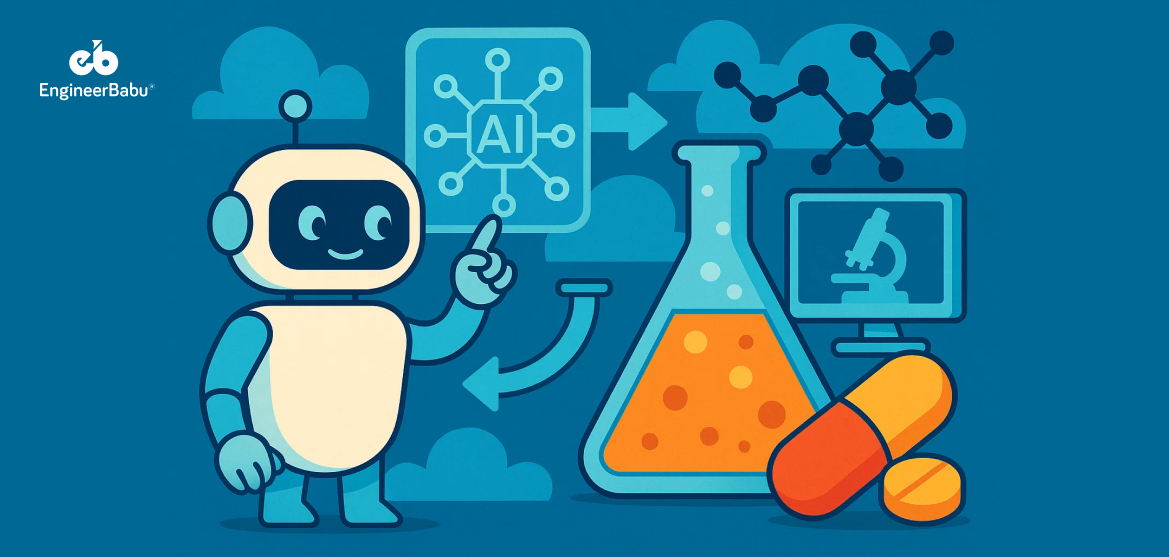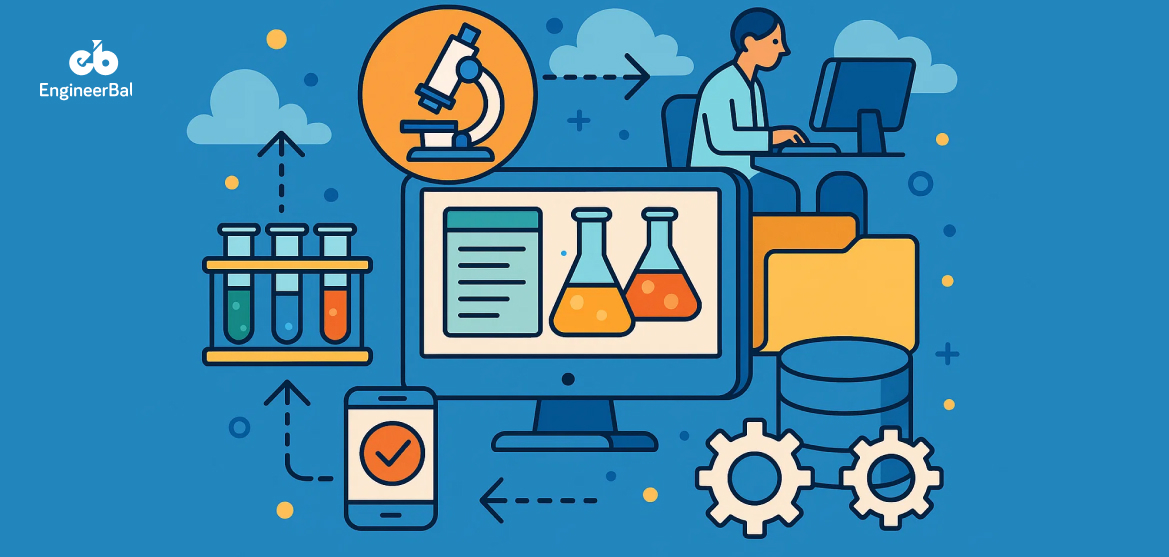Clinical labs today face one big problem: they’re drowning in data but short on time. Every year, diagnostic labs worldwide process over 14 billion tests, and this number keeps growing. Manual workflows cannot keep up. They are slow, error-prone, and hard to scale.
That is where AI in modern lab diagnostics comes in. AI models can read test results, flag anomalies, suggest next steps, and even predict patient risks. Labs using AI have reported up to 25% faster turnaround times and a 30% reduction in diagnostic errors, especially in pathology and genetic testing.
But AI is not just about speed. It is changing how labs operate, from automating simple tasks like slide sorting to making sense of complex genomic data.
This post walks you through 9 specific ways AI is reshaping lab diagnostics right now. These are not future ideas. These are problems AI in modern lab diagnostics is solving today.
How AI in Modern Lab Diagnostics is Changing the Game
1. Automating Routine Lab Tasks
Every lab has them. The repetitive jobs that eat up time but still have to be done perfectly. Think about labeling vials, logging samples, or transferring results into the system. These tasks may look small, but across thousands of samples a day, they add up fast.
AI in modern lab diagnostics helps automate these steps so lab teams can focus on what really needs human judgment. For example, AI systems connected to sample trackers can automatically log patient data, match it with test IDs, and push it into the lab’s information system without manual entry.
That means fewer data entry errors, faster sample processing, and more time for clinical decisions. Some labs are also using AI with robotic arms to sort and load samples based on test types or urgency. It is a simple fix that speeds up the workflow and improves accuracy.
This kind of automation is not just about speed. It also supports better compliance. Automated logs and timestamps make it easier to meet reporting standards without extra admin work.
2. Enhancing Diagnostic Accuracy
Lab errors can be costly. Inaccurate diagnostics not only delay treatment but also lead to repeat testing and patient stress. That is where AI in modern lab diagnostics shows some of its most valuable potential.
AI models trained on large datasets can spot patterns and anomalies that human eyes often miss. For example, in digital pathology, AI can analyze tissue slides pixel by pixel and highlight areas that may show early signs of cancer. These systems do not get tired or distracted, which means they apply the same level of precision across every case.
What makes this even more useful is that AI supports the work of lab professionals rather than replacing them. It acts like a second opinion that is always available. That is important in settings where labs are understaffed or overloaded with cases.
3. Speeding Up Test Turnaround Times
Speed is critical in diagnostics. Patients waiting for answers, doctors deciding on treatment plans, and labs juggling hundreds of samples every day all depend on quick results. But with traditional processes, test turnaround can take hours or even days, especially during peak load.
Using AI for clinical diagnostics helps shorten that timeline. AI algorithms can analyze test data in real time. That includes everything from blood test panels to PCR results. Instead of waiting for a technician to manually verify and enter each result, AI models can instantly flag outliers, match them to known conditions, and push them through for review.
Labs using AI tools often report a 20 to 30 percent drop in processing time. In some cases, urgent test results can be delivered in under an hour, even during busy shifts. That is a major improvement for emergency departments, where every minute counts.
Another area where AI speeds things up is triaging. By prioritizing critical cases based on patient history and test indicators, AI ensures that life-threatening results get to the right hands faster. That can make a real difference in clinical outcomes.
Faster turnaround also benefits labs financially. It increases the number of tests they can handle daily without adding staff or infrastructure. For healthtech builders, that creates demand for solutions that focus on speed and smart workflow routing.
4. Enabling Predictive Diagnostics
Most diagnostic tests tell you what is happening right now. But what if labs could also tell what is likely to happen next? That is where AI in modern lab diagnostics brings real value.
Predictive diagnostics use AI to analyze large sets of patient data, past test results, and clinical history to forecast potential health risks. For example, an AI model can look at early lab values and predict a patient’s risk of developing sepsis, kidney failure, or even certain cancers.
Some hospitals are already using predictive models to flag high-risk patients before symptoms fully develop. This early warning gives doctors a head start on treatment, which can improve outcomes and even save lives.
These systems are especially helpful in chronic disease management. By spotting subtle trends in lab values over time, AI can help clinicians adjust treatments before conditions get worse.
For AI product developers, this is a space with strong clinical demand. Labs and hospitals are looking for tools that not only diagnose but also anticipate. That means building models trained on diverse, high-quality datasets and tested for real-world accuracy.
5. Supporting Rare Disease Detection
Rare diseases often go undiagnosed for years. Symptoms can be vague, test results might look normal, and many conditions are too uncommon for most clinicians to spot right away. This delay can lead to unnecessary treatments and poor outcomes.
AI models trained on genetic, metabolic, and clinical data can scan test results for rare patterns that might be missed in a standard review. These systems do not rely on one lab result. They pull from multiple data points, including patient history and related biomarkers, to suggest possible rare conditions.
Some AI tools are already being used to flag conditions like Gaucher disease or Fabry disease during routine lab panels. Others help geneticists prioritize which variants are worth looking into during genomic testing.
Early detection matters a lot in rare diseases. It can lead to better treatment options and reduce unnecessary testing. For healthtech brands, this is a chance to build tools that improve access to timely and accurate diagnoses for overlooked conditions.
6. Integrating with Lab Information Systems
Lab Information Systems (LIS) are the backbone of modern diagnostics. They handle everything from patient records and test orders to final reports. But these systems were not built with AI in mind. That is starting to change.
AI in modern lab diagnostics works best when it is tightly connected to the LIS. This integration allows AI tools to pull real-time data, run analyses in the background, and feed results back into the lab workflow without extra steps. The goal is to make AI part of the daily process, not an extra tool that slows things down.
For example, if an AI model detects a test anomaly, it can trigger an alert in the LIS and recommend a follow-up test automatically. Some AI tools also help generate summaries or flag critical results for faster review by lab staff.
This type of integration improves both speed and consistency. It also reduces manual work, which helps labs handle more volume without burning out staff.
Also check: 8 Ways LIMS Apps Transform Modern Laboratory Operations
7. Reducing Operational Costs
Running a diagnostic lab is expensive. Between staffing, equipment, reagents, and regulatory compliance, the costs add up quickly. Many labs work on tight margins, especially when handling high volumes of routine tests.
AI in modern lab diagnostics helps reduce some of those costs. It does this by cutting down on manual labor, minimizing errors, and making better use of lab resources. For example, AI can predict which reagents are likely to run out soon based on usage patterns. This helps prevent waste and overstocking.
Labs that use AI to automate repetitive tasks like data entry or test prioritization often see lower staffing needs for administrative roles. That does not mean replacing people. It means letting skilled staff focus on tasks that truly need human expertise.
AI also supports preventive maintenance. By analyzing machine usage and performance logs, it can alert technicians before something breaks. That reduces downtime and avoids the high cost of emergency repairs.
For healthtech teams building AI tools, showing a clear return on investment matters. Labs need solutions that save both time and money without compromising quality.
8. Helping Labs Meet Compliance and Reporting Standards
Every lab works under strict rules. Whether it is CLIA, CAP, or local health authority guidelines, staying compliant means keeping detailed records, following standardized workflows, and being ready for audits at any time.
AI in modern lab diagnostics can make that process easier. AI tools can track every step of a test workflow, log timestamps, and ensure that each action matches the lab’s standard operating procedures. This creates a built-in audit trail without needing extra paperwork.
Some labs use AI to automatically check if a test result meets quality control benchmarks before it gets released. Others rely on AI to flag any deviation from protocols, like a delayed sample or inconsistent result.
Reporting is another area where AI adds value. Instead of lab staff spending hours compiling data for monthly reports or regulatory submissions, AI can pull the data, organize it, and even draft summaries based on predefined templates.
9. Powering Personalized Diagnostics
Not all patients are the same, and their test results should not be treated the same either. Personalized diagnostics is about adjusting lab results and interpretations based on individual differences like genetics, medical history, lifestyle, and even environmental exposure.
AI in modern lab diagnostics makes this level of customization possible. By analyzing large datasets that include genetic markers, past lab trends, and treatment outcomes, AI can suggest what a specific result means for a specific patient. That goes far beyond just flagging something as high or low.
For example, an AI model might look at a patient’s lab values and medical history and identify that a common treatment might not be effective for them. Or it could recommend additional tests based on subtle patterns that suggest a rare underlying condition.
Also read: 10 Use Cases Of AI In The Pharmaceutical Industry
Conclusion
AI is not just a tool for labs. It is quickly becoming the standard for how diagnostics are done smarter, faster, and more accurately. From automating routine tasks to helping doctors spot rare diseases and customize treatment plans, AI in modern lab diagnostics is reshaping what labs can achieve.
For healthtech brands and product teams, this shift opens up new possibilities. Labs need solutions that blend speed with precision, automation with reliability, and compliance with innovation. That is the space AI fills. The challenge now is to build products that are not just technically impressive but practically useful inside real lab environments.
If you are working on AI products in healthcare, diagnostics is one of the most impactful areas you can focus on.
FAQs
1. What is the role of AI in modern lab diagnostics?
AI supports labs by automating repetitive tasks, improving test accuracy, predicting disease risks, and helping personalize patient care. It also speeds up workflows and reduces the chances of human error.
2. Is AI reliable enough for diagnostic decision-making?
AI is already being used in high-stakes environments like pathology and radiology. AI can match or even exceed human accuracy in some diagnostic tasks when trained on high-quality data and properly validated.
3. Can AI help small or mid-sized labs, or is it only for large hospitals?
AI tools are increasingly scalable. Cloud-based AI solutions and plug-in APIs are making it easier for smaller labs to adopt AI without huge infrastructure changes.
4. How do labs stay compliant when using AI?
Modern AI tools often include built-in audit trails, quality checks, and reporting features that support regulatory compliance. Integration with LIS helps ensure every action is logged and traceable.
5. How can EngineerBabu support healthtech companies building AI diagnostic tools?
EngineerBabu specializes in building secure, scalable healthtech platforms. Their team has experience developing AI-powered tools for diagnostics, patient monitoring, and lab automation. Whether you are a startup or a hospital-backed tech team, EngineerBabu can help turn your AI idea into a compliant, production-ready product.




